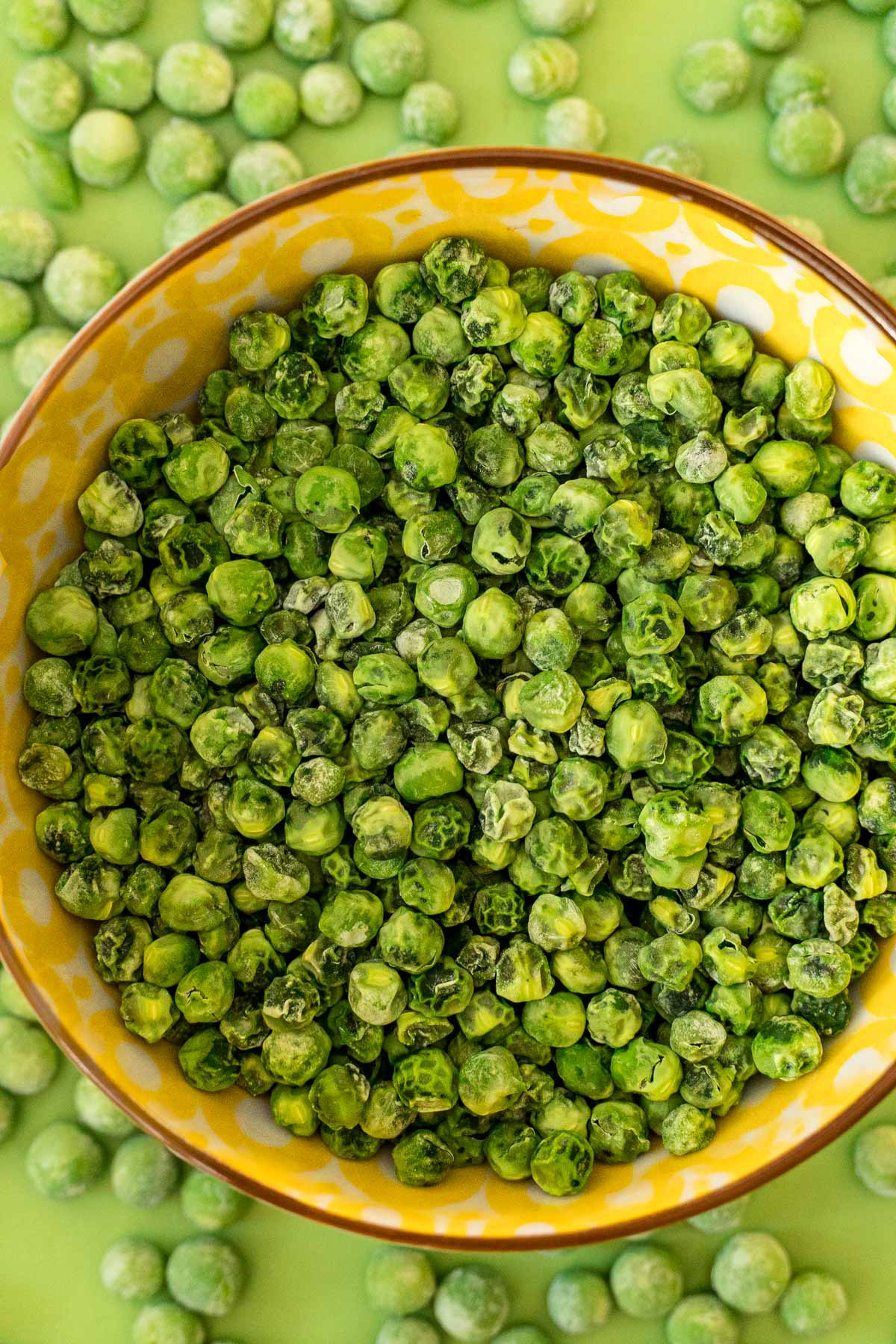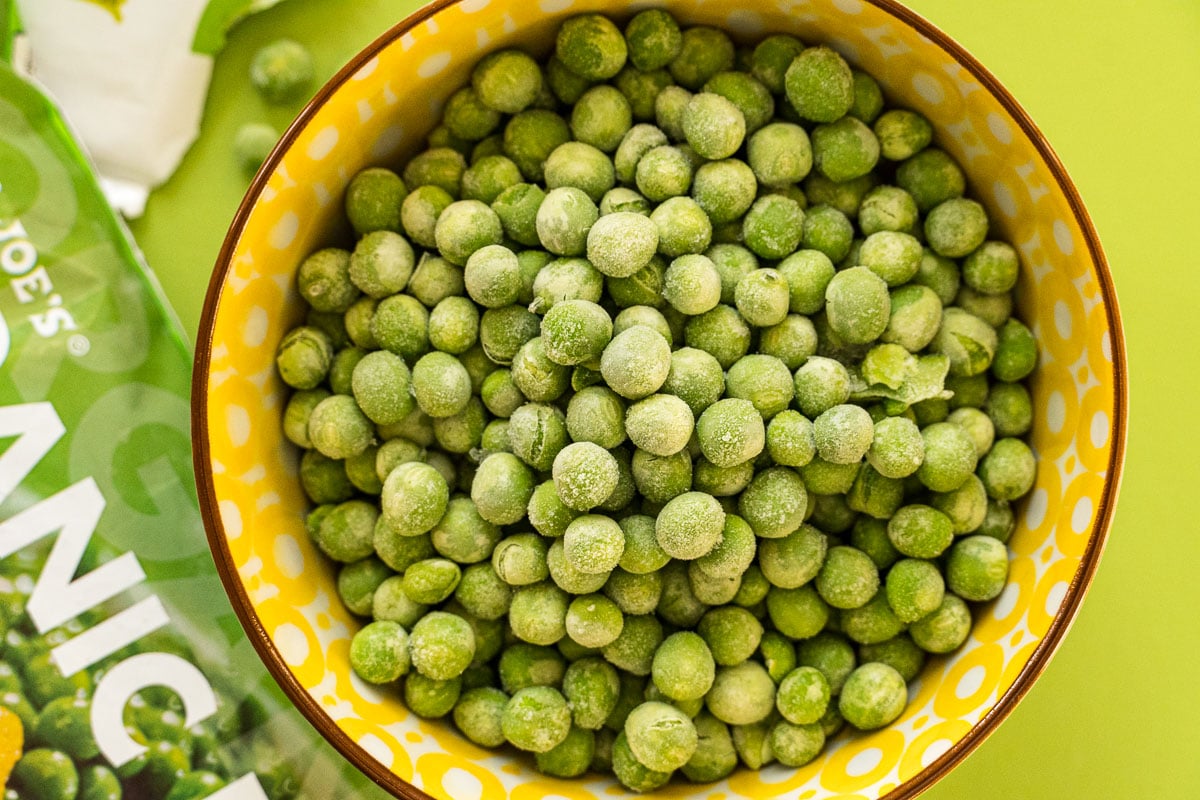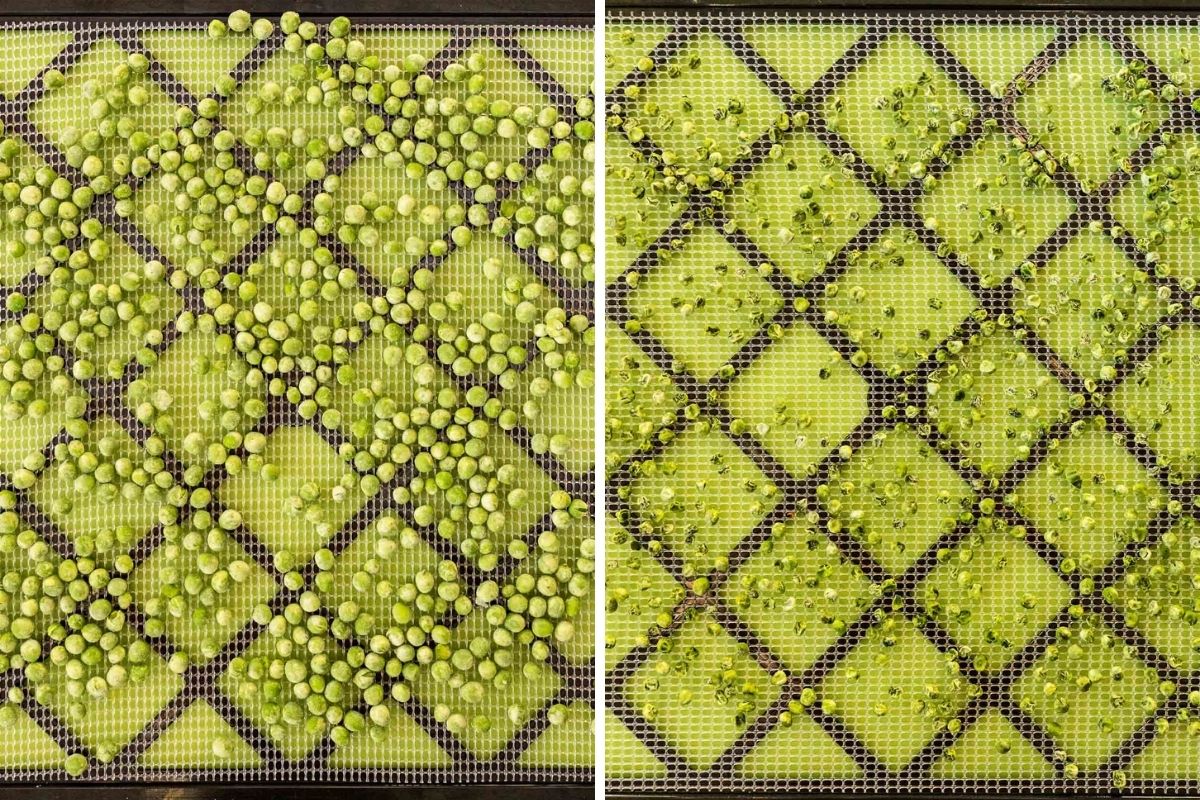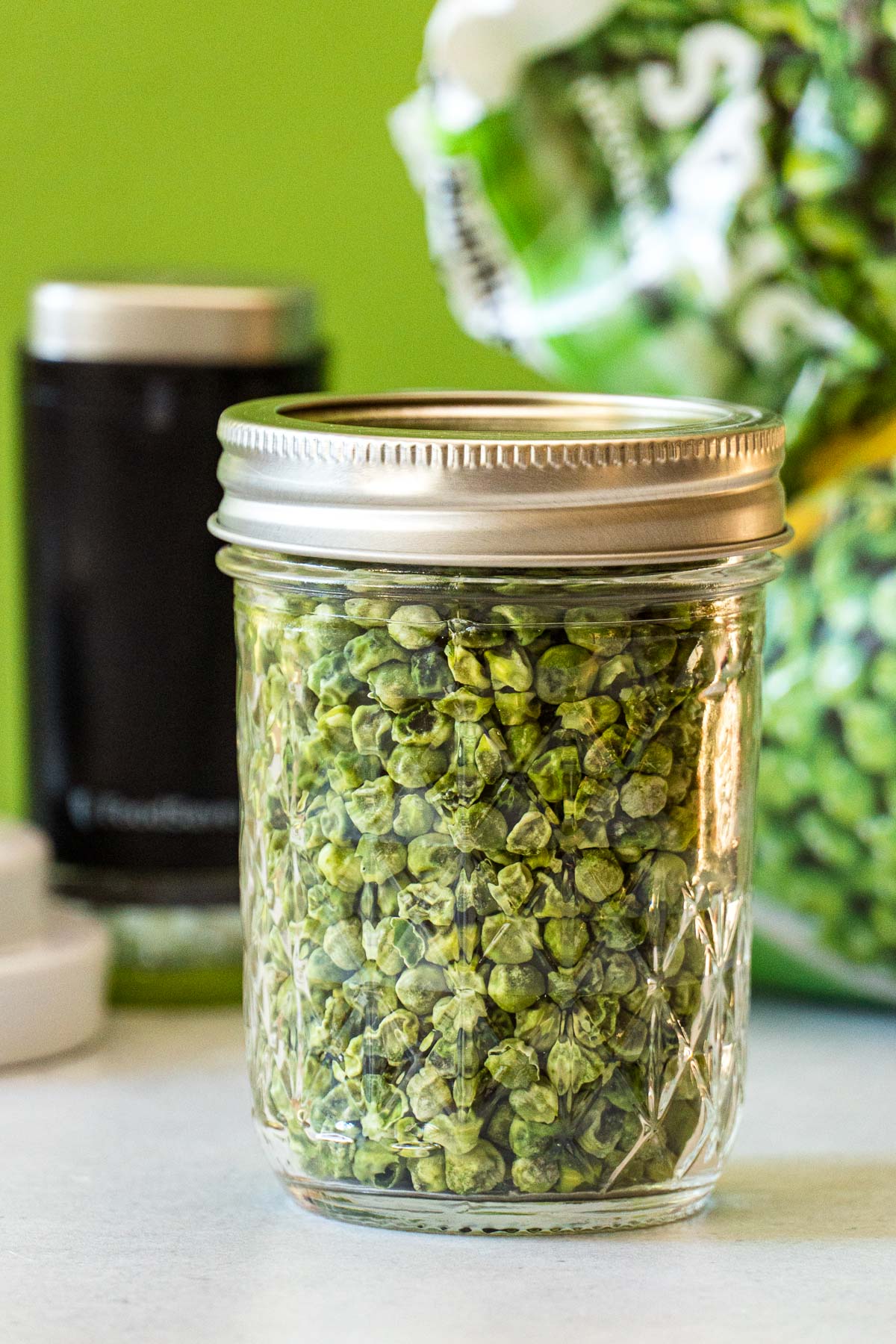How to Dehydrate Peas
This post may contain affiliate links.
Dehydrating peas is a great way to add some green to your backpacking or camping meals, or just to have in your pantry to throw into quick weeknight meals. All they need is a few minutes in hot water to rehydrate!

Peas are sweet, plump, and taste like spring. They’re also a great source of plant-based protein. We love using peas in our cooking at home, but they present a bit of a storage problem when camping or backpacking. Frozen peas need to be kept in a bulky cooler and canned beans, well, just taste terrible.
That’s why it’s a great idea to dehydrate peas. The dehydrating process not only makes them shelf-stable, but it removes water weight so they are perfect for lightweight backpacking meals.
To enjoy peas on their own, all they need is a 15-minute soak in boiling hot water to fully rehydrate. Or, you can add them to meals that already use a lot of hot water – like boiling water for pasta or steaming rice.
Dehydrating your own peas is incredibly simple and absolutely worth it if you do a lot of camping or backpacking.

What types of peas can be dehydrated?
Frozen peas from the grocery store are the best option for dehydrating. They don’t require any pre-treatment like fresh peas would and lack the excessive starchiness and mushy texture that canned peas can have.
Prepping peas for dehydrating
Great news! If you’re using frozen peas there is virtually zero prep work to be done! You just need to spread the peas out on a mesh liner or parchment paper on your dehydrator trays.
But do make sure your equipment and hands are clean & sanitized to prevent contamination, which can spoil your batch down the line.
Equipment Spotlight: Dehydrators
If you’re in the market for a dehydrator, we recommend buying one with an adjustable temperature. This will allow you to dial in the drying temp to give you the best results for individual ingredients. The dehydrator we recommend (and use) most often is the COSORI dehydrator. You can also check out our best dehydrators post for a comparison of all the dehydrators we’ve used and would recommend.

How to Dehydrate Peas
Peas are one of the easiest things to dehydrate.
- Arrange the frozen peas on your dehydrator trays. Peas shrink a lot so make sure you line your trays with with parchment paper or, even better, a mesh liner cut to the size of your tray.
- Dehydrate at 125ºF (52ºC) for 6-10 hours until the peas are dry and hard.
- Depending on your machine, you may need to rotate the trays every so often to promote even drying.
How to tell when peas are done
Peas should be hard when they are completely dried. To test, let them cool, then try to squeeze one between your fingers. It should be rock hard and potentially crunchy. But if they are soft or squishy at all, that means there is still moisture inside and you should continue dehydrating them.

How to store
When properly dried and stored, dehydrated peas can last upwards of a year. Here are our tips for storage:
- Let the peas cool completely before transferring them.
- Condition: Loosely pack the peas in a transparent airtight container. Check it daily for a week to check for signs of moisture or condensation, and shake to help prevent the peas from sticking together. If signs of moisture appear, stick them back into the dehydrator (as long as there’s no mold—in that case, toss the batch). After a week, if there’s no signs of moisture or mold, you can package them for long-term storage.
- Store in a clean, airtight container. For longer shelf life, vacuum seal.
- Use a moisture absorbing desiccant packet if you anticipate opening the container often, or if you live in an area with high humidity.
- Label the container with the date and any other important details
- Place the container in a cool, dark, and dry place—inside of a pantry cabinet works well.
Vacuum Sealing Tips
We like to store our dehydrated food in mason jars that have been vacuum-sealed using this handheld FoodSaver vacuum sealer along with these jar sealing attachments. This gives us the benefit of vacuum sealing without the waste (and expense) of plastic vacuum sealing bags. Since the jars are clear we make sure we store them in a dark spot in our pantry to keep them out of direct light.

How to use
To rehydrate dried peas, cover in boiling water for 15-20 minutes, or add directly into dishes that are liquidy and will cook for a bit. Here are a few ideas on how to use dehydrated peas:
- Add to soups, stews, or casseroles
- Rehydrate and add to pasta, risotto, or rice dishes
- Use them in the following camping & backpacking meals:
Fresh To Dehydrated Conversion
1 cup (136g) of frozen peas will yield ⅓ cup (32g) dried peas

Dehydrated Peas
Ingredients
Equipment
Instructions
- Start with clean hands, equipment, and countertops.
- Arrange the peas on dehydrator trays, utilizing a mesh liner to prevent the peas from falling through the holes as they shrink.
- Dehydrate at 125ºF (52ºC) for 4-10 hours until the peas are dry and hard (see note 2).
Storage Tips
- Let the dried peas cool completely before storing.
- Short term storage: If peas will be consumed within a few weeks, store in a ziptop bag or sealed container on the counter or in a pantry.
- Long-term storage: Condition by loosely packing the dried peas in a transparent, airtight container. Leave it on the counter for a week and check it daily for signs of moisture. If condensation appears, return the peas to the dehydrator (unless there are signs of mold—then, throw out the whole batch). Shake occasionally to keep the pieces from sticking together.
- After conditioning, store in an airtight container in a cool, dark place for up to a year. Vacuum sealing will help extend the shelf life and quality of the peas.
